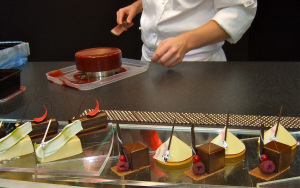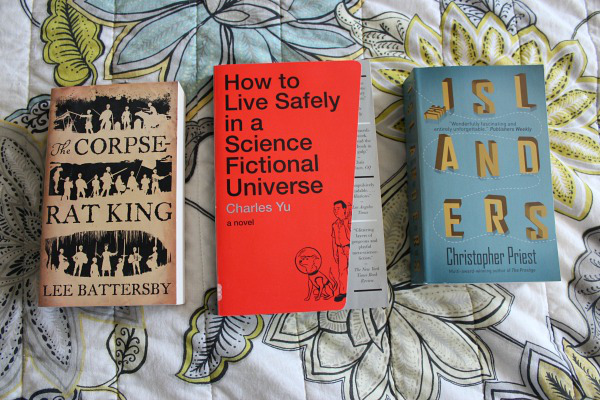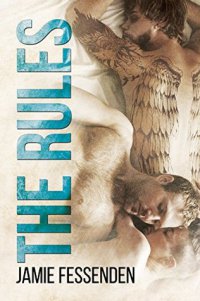The fifth issue of The Wicked + The Divine marked the end of the series’s first arc. It ended without much of anything resolved; Laura still doesn’t know who killed the judge, and Lucifer, who was everyone else’s prime suspect in that murder, has been summarily executed by Ananke for being troublesome. Everyone knows that the gods aren’t faking their miracles now, and Laura has inexplicably shown a bit of a divine spark herself in the form of lighting a cigarette with a finger click–once. The resolution is mostly just an emotional one (Laura has been through a remarkable ordeal what with getting an up close view of her new friend’s head disintegration) as we’ve been given the dime tour of the world and (Gillen and McKelvie hope) a reason to want to know what happens next for our protagonist.
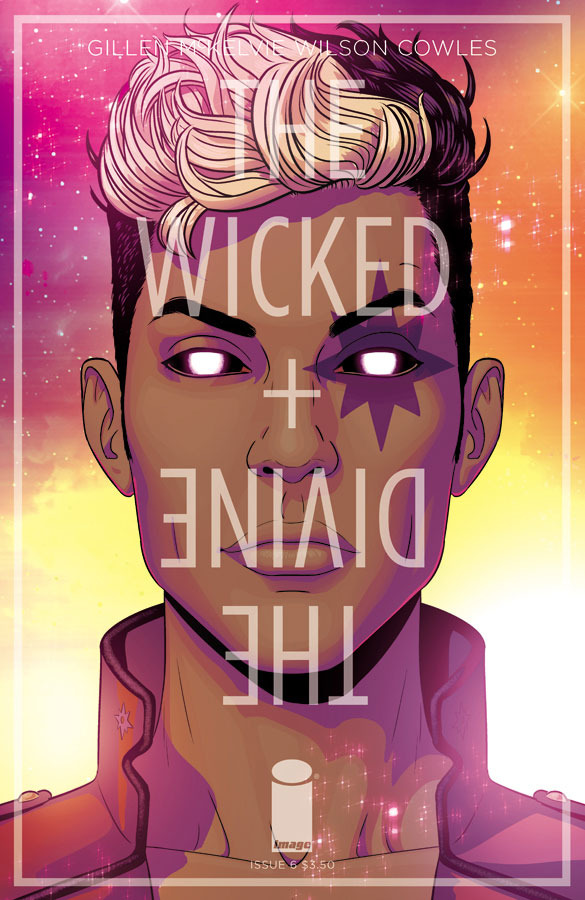
In a sea of glam headshots, Inanna’s is perhaps the glammest. (Cover by Jamie McKelvie & Matt Wilson, design by Hannah Donovan; Image credit: Comic Vine)
Fortunately, I super dig The Wicked + The Divine, so we’re going to keep going.
Issue six picks up a month and a half after Lucifer’s death with Laura trying to resume a normal life. She’s failing miserably, as one might imagine a person does after having several near death experiences and seeing someone else’s violent death up close. While going about her life, she constantly clicks her fingers, hoping that she’ll perform another miracle. A chance encounter with some fellow Pantheon fans who are wearing cheeky postmortem Lucifer tribute merch leads to her vomiting in a dumpster (twice). She feels unable to talk with her parents about the traumatic stuff she’s experienced. Laura is not coping well, and it’s not only because of what happened with Lucifer.
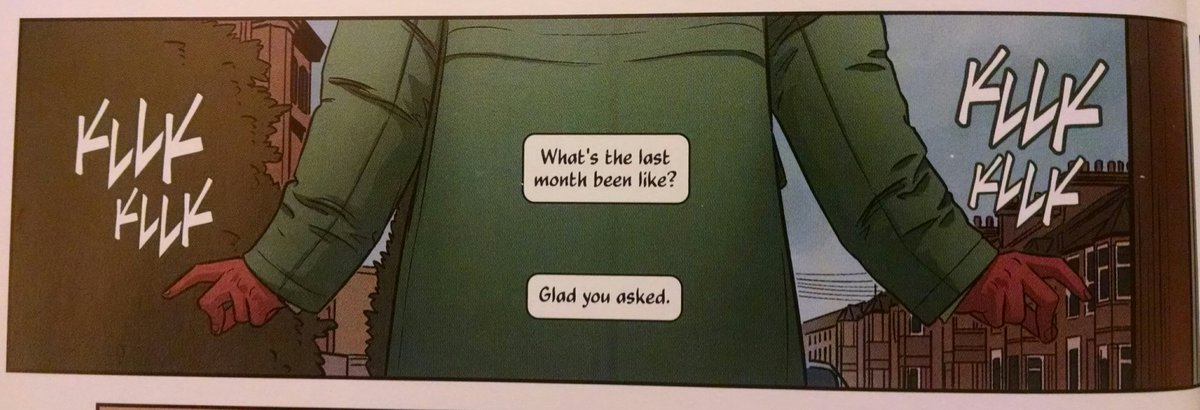
Just imagine walking around all the time clicking your fingers and hoping that you accidentally light something on fire. That’s pretty much what half of Laura’s life has been like since the last issue. (Artwork by Jamie McKelvie, colors by Matt Wilson, letters by Clayton Cowles)
Naturally, because this is a fantasy story, Laura doesn’t get to fade back into fandom obscurity as someone who just had a weird thing happen in her vicinity that one time; she ends up getting contacted by a member of the Pantheon whom we haven’t yet met in person (although we have heard a few bits of gossip about him). The god in question is Inanna the Queen of Heaven, the kinder, gentler pansexual member of the Pantheon and Baal’s ex-boyfriend (if you haven’t grokked it by this point, The Wicked + The Divine is delightfully queer). His visual design is highly reminiscent of Prince with a strong preference for shades of purple matched with gold accents; there’s a strong sense of spectacle associated with the character as McKelvie and Wilson showcase three different outfits for Inanna in this one issue (most of the Pantheon members we’ve met so far have stuck to more or less one central look with small variations throughout the first arc). Inanna likes to be seen, even when he’s trying not to draw attention to himself (Laura mocks his choice of low-profile meetup attire as he’s hanging out in a graveyard in a purple trench coat with matching tiger print boots).
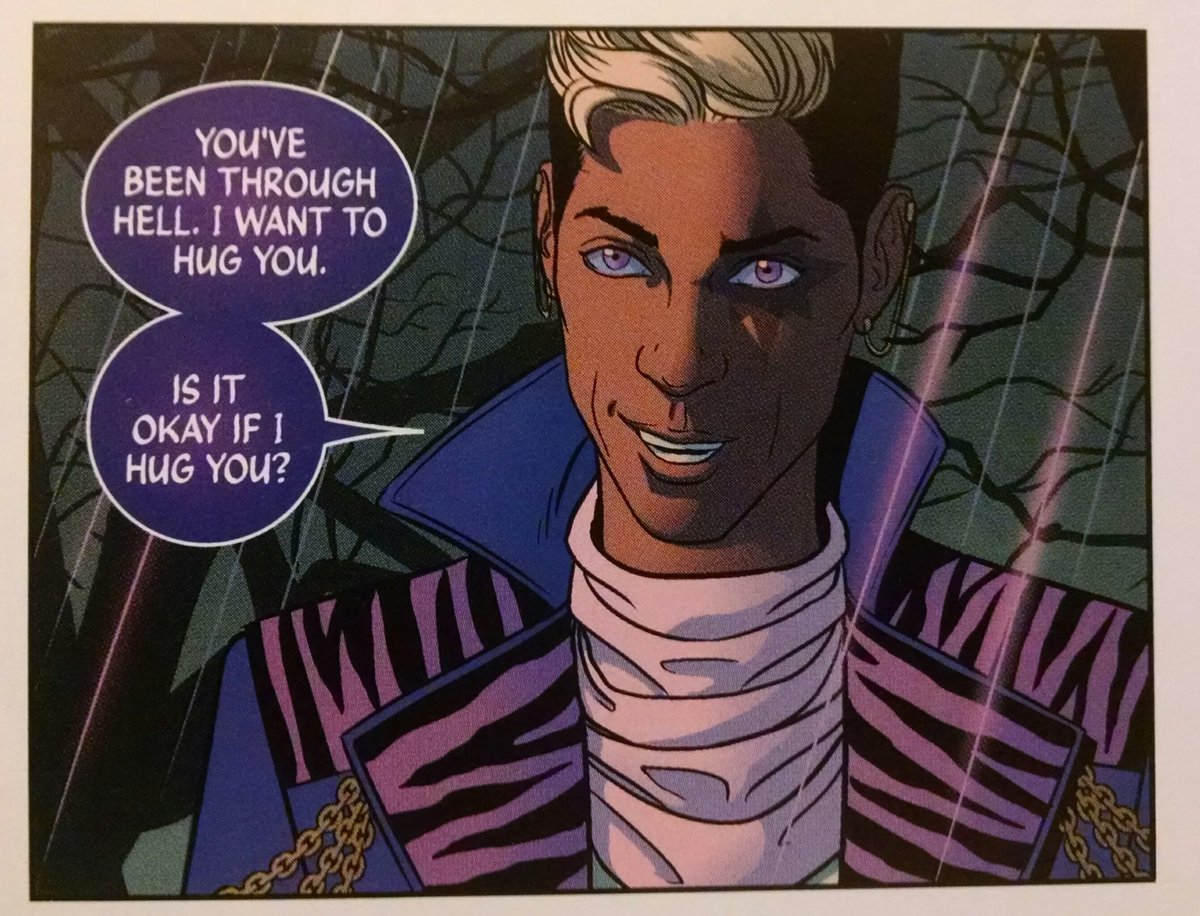
Tell me you don’t look at this face and instantly want to trust him. (Artwork by Jamie McKelvie, colors by Matt Wilson, letters by Clayton Cowles)
Despite the ostentatious quality to Inanna’s mere presence on the page, he comes across here as an incredibly warm, caring person. He’s mindful of personal boundaries (before comforting Laura with a hug he asks her explicit permission), he explains that he remembers Laura from before the Recurrence (they were both attendees at the previous year’s Pantheon fan convention Ragnarock, an affair that has mostly been the gathering place of stuffy academics but will most assuredly be a giant party now that the Recurrence is in progress), and he’s genuine in his praise of the positive qualities he sees in Laura. Inanna’s talent is making the people he’s with feel like they’re the most important thing in the world to him, and while that level of charm should normally engender some feelings of caution, it’s hard to dislike him. On the spectrum of artifice to authenticity that all the Pantheon members exist along, Inanna rings in strongly on the authentic side. He’s so good at authenticity that it’s easy to overlook the fact that he’s also performing.
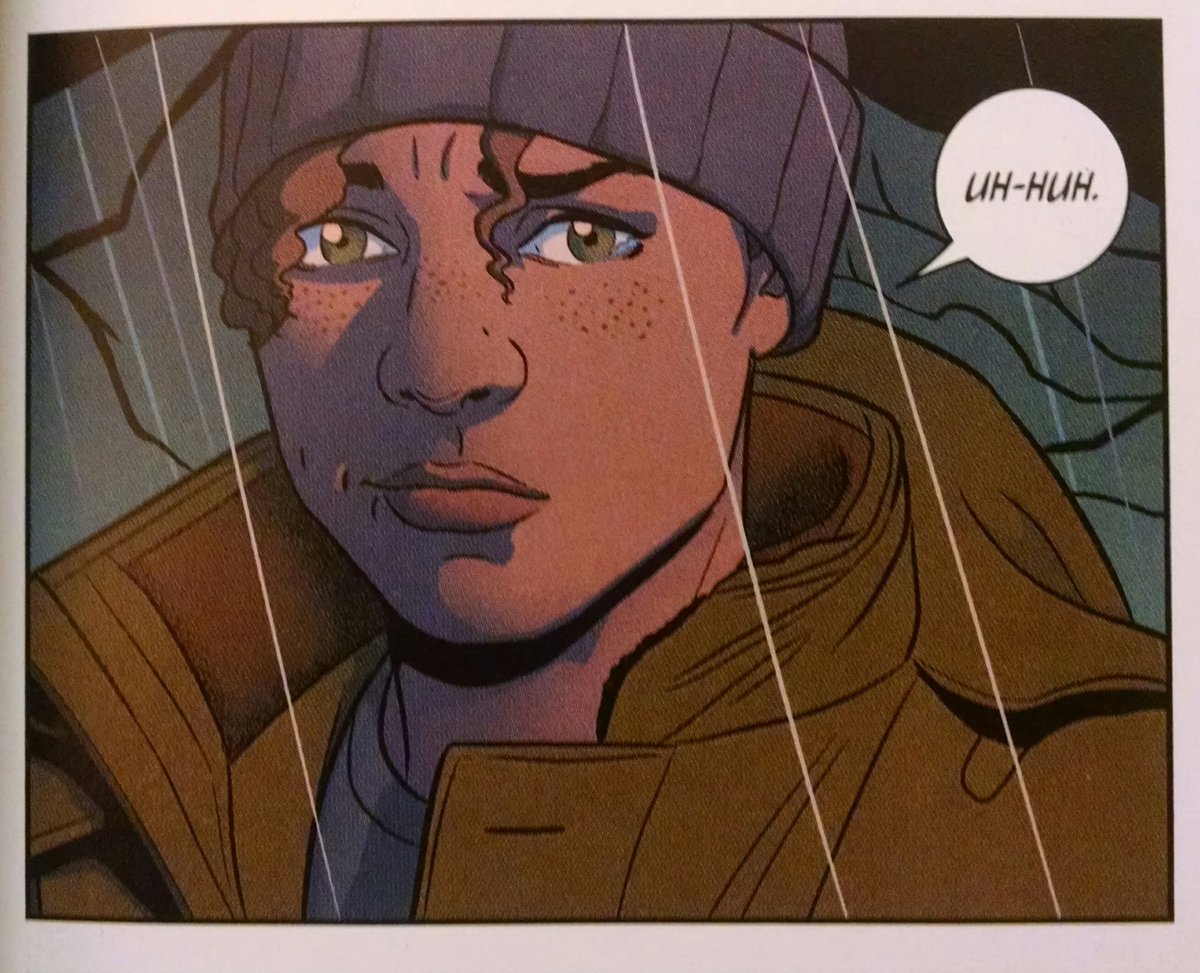
Laura does, but she’s also been through a really terrible month. (Artwork by Jamie McKelvie, colors by Matt Wilson, letters by Clayton Cowles)
The actual plot points of the issue are relatively thin. Inanna discloses to Laura that he’s divined how the men who attempted to murder Lucifer back in the first issue relate to the Pantheon: they weren’t religious extremists but fans. Because it’s divination, the details beyond that are extremely fuzzy, and Inanna charges Laura with trying to find more information about them. Laura agrees and reluctantly uses her newfound status in Pantheon fandom to start connecting with other fans in the hopes of figuring out what’s going on. The rest of the issue is devoted to explaining a little bit of Inanna’s background (he saw Laura arguing with an old dude who hates Millennials at Ragnarock and was impressed with her fearlessness, and now that he’s a god with less than two years to live he never wants to be afraid again) and showing the personal fallout of Lucifer’s death for Laura. It’s a remarkably thin chapter if you’re here for the murder mystery, but Inanna is such a delightful new character that I feel inclined to overlook that (I am, of course, also inured against the frustrations of month-to-month comics reading since I stick to trades).
All told, the arc we’re moving into will best be read mostly as the second half of a larger story that Gillen and McKelvie began in the first five issues. Lucifer’s death was a good point of resolution in miniature, but there are lots of things that still need to addressed with regard to the plot that was set in motion at the beginning.
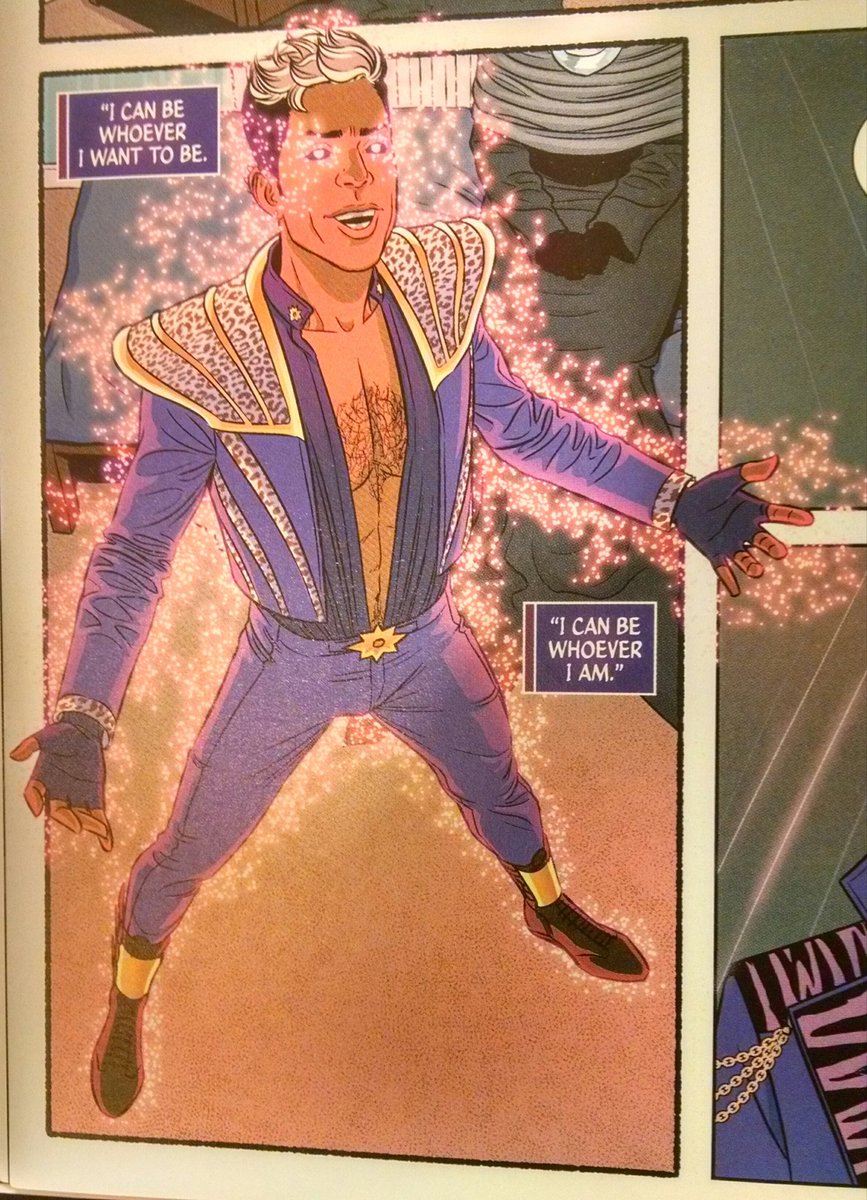
This outfit feels more like a color variant on a Michael Jackson ensemble to me, but Inanna’s not about being boxed in by what people expect him to be. (Artwork by Jamie McKelvie, colors by Matt Wilson, letters by Clayton Cowles)
Advertisements Share this: